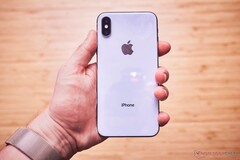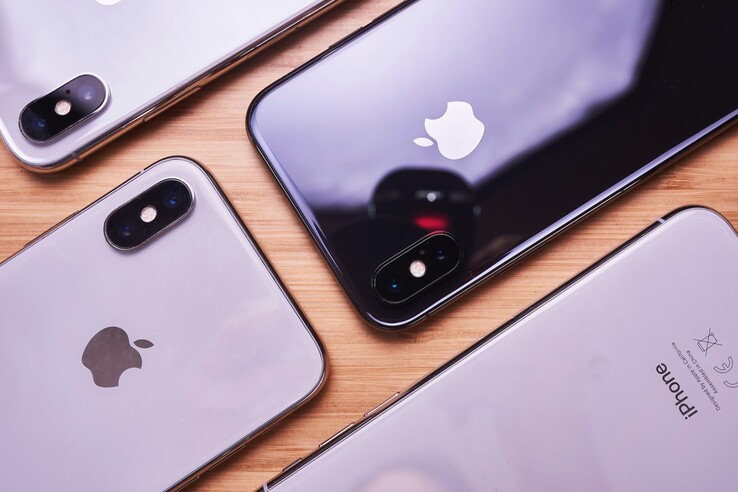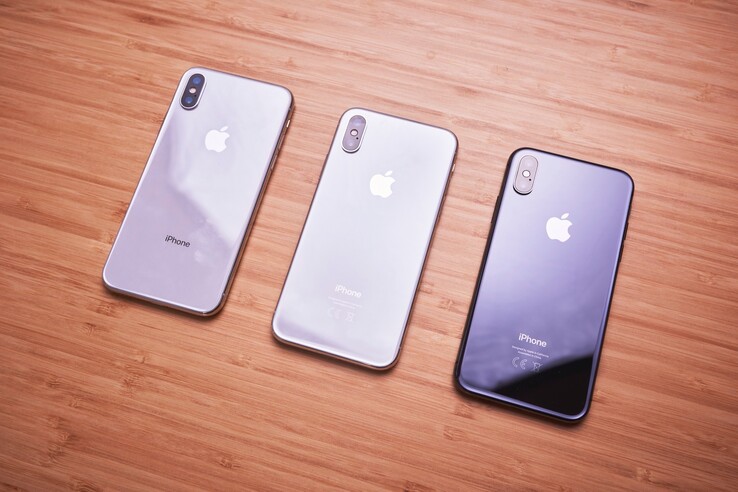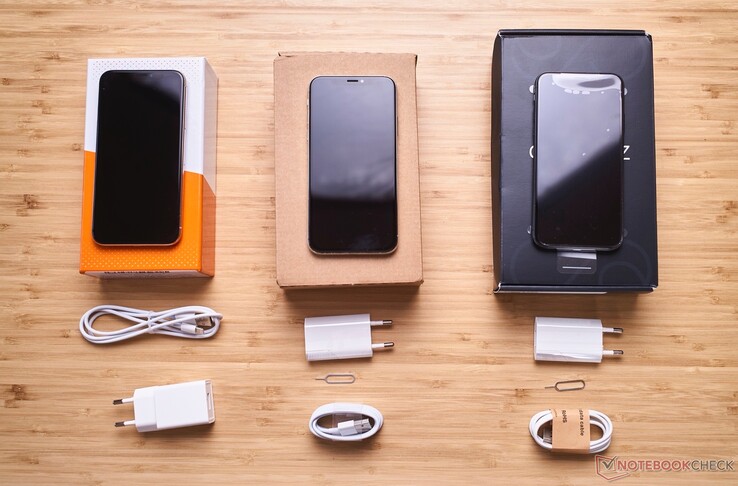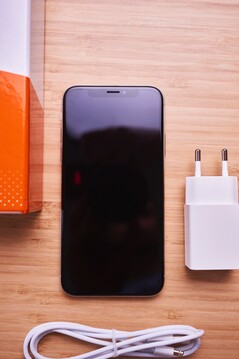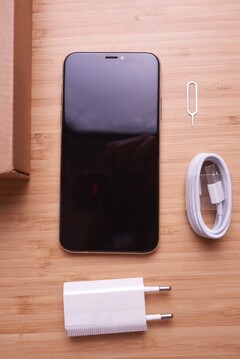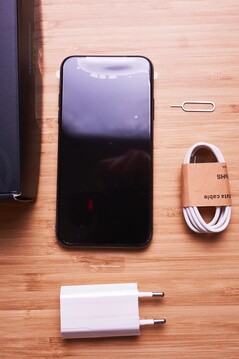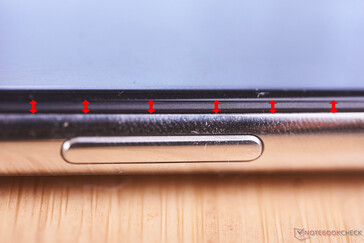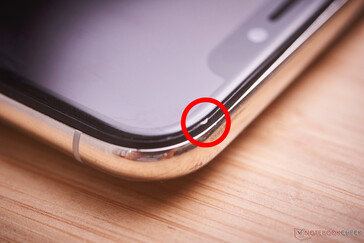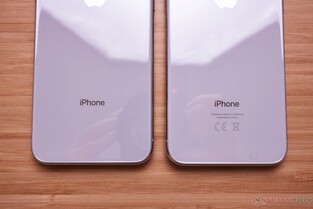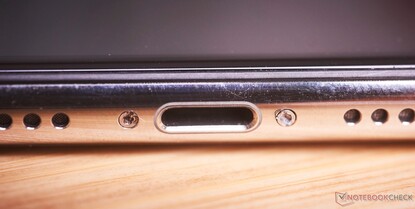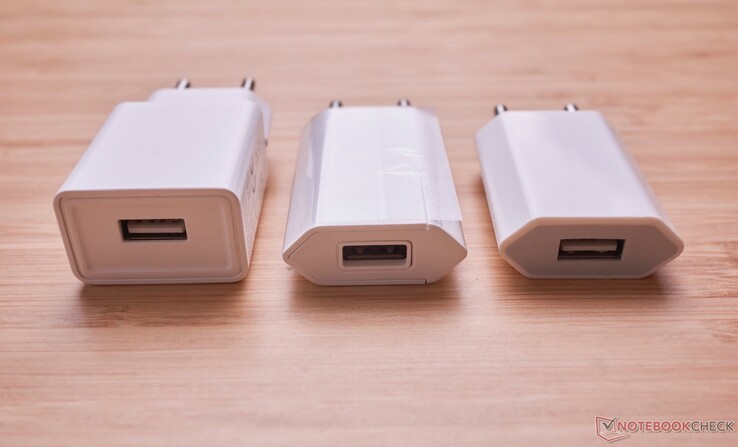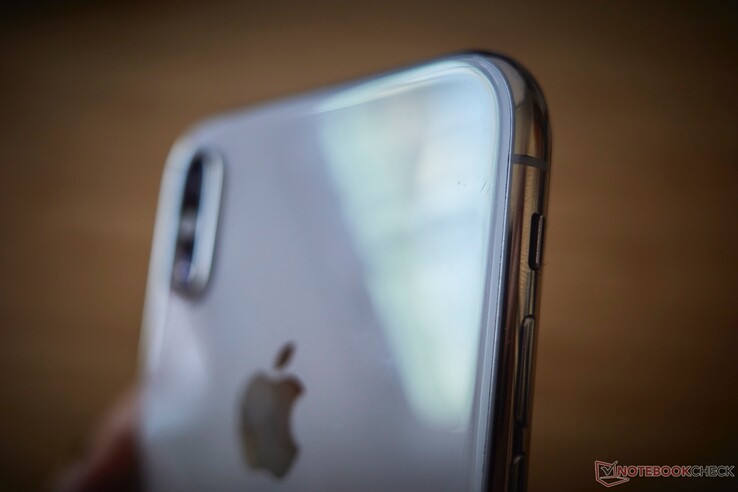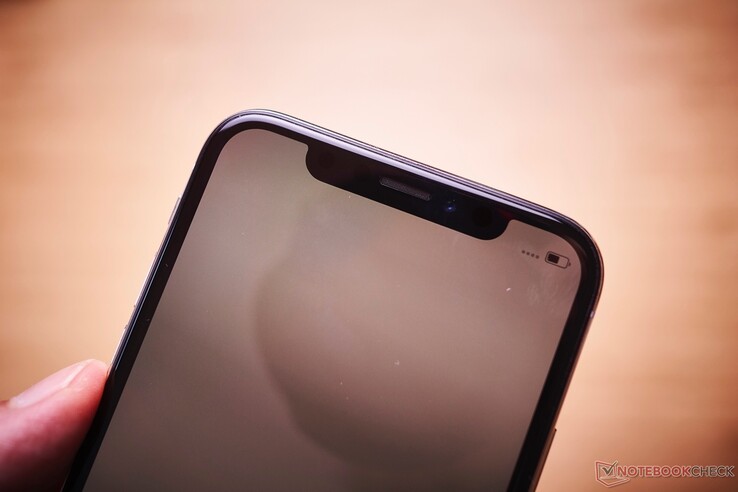What exactly does “Refurbished” even mean, and what should I look out for?
Devices marked as “refurbished” are more often than not used. The seller is responsible for cleaning the devices, resetting them to factory default, and conducting any repairs deemed necessary. Unlike smartphones sold by private parties refurbished smartphones sold by businesses often come with some sort of warranty and very often accept returns should the device not fit the description or meet your expectations.
Older devices often suffer from poor batteries, and many sellers replace batteries with significant loss in capacity with new ones. Depending on seller we would expect a battery health of at least 80 to 88 percent. Upon further inquiry we were told that original OEM parts are rarely ever used given the general and well-documented unavailability of Apple OEM parts. However, the batteries used instead are supposed to be of no lesser quality than the originals.
The better-known refurbished iPhone retailers are Apple itself, Back Market, and Woot. Some sellers offer devices in various conditions with prices decreasing with increased wear and tear. More details below.
What iPhone model is right for me?
For many years now Apple’s well-established iPhone season has been September. Sometimes the models introduced are mere facelifts with minor updates compared to their immediate predecessors. In addition to the many little things that we point out in our extensive reviews of each device the four most important factors when choosing an iPhone are the processor (SoC), the size and quality of the display, the cameras, and the choice between Touch ID or Face ID.
The SoC is the primary factor in determining how fast an iPhone is going to be. For example, Apple's A14 Bionic is faster than the A13 Bionic. Details regarding the actual performance deltas for each generation can be found below. Generally speaking, if you use your iPhone mainly for making phone calls, listening to music, and browsing the web an older model will perfectly suffice your everyday needs. If, however, you tend to run demanding applications such as video editing or games you should go for the fastest SoC available.
Apple uses two different display technologies in their iPhone line-up, LCD and OLED. The latter were first introduced with the iPhone X and are limited to the more expensive high-end models of each generation, such as for example the iPhone XS or iPhone 11 Pro but not the iPhone XR or iPhone 11. The biggest benefit of OLED panels is their ability to completely turn off individual pixels therefor producing real and true blacks with a much higher contrast ratio.
In return, they come with a unique set of drawbacks as well, such as for example the need for PWM to control brightness leading to flickering at low levels of brightness. Most people are unable to see this flicker as it tends to run at very high frequencies. However, some sensitive users can suffer from headaches. The actual PWM frequencies for each display are noted in each of our reviews, such as for example in our Apple iPhone 12 Pro review.
The cameras do not only differ in regard to quality but quantity as well. In addition to the traditional wide-angle lens available on every iPhone some devices come with additional ultra-wide angle and/or telephoto lenses. Another important difference is the mechanism for biometric unlocking. Older devices with a home button underneath the display support Touch ID while newer devices without bezels support Face ID.
| iPhone 7 / 7 Plus | iPhone 8 / 8 Plus | iPhone X | iPhone Xr | iPhone Xs / Xs Max | iPhone SE 2 | iPhone 11 | iPhone 11 Pro / Pro Max | iPhone 12 / 12 mini | iPhone 12 Pro / Pro Max | |
|---|---|---|---|---|---|---|---|---|---|---|
| Launch | September 2016 | September 2017 | November 2017 | October 2018 | September 2018 | April 2020 | September 2019 | October 2020 | ||
| SoC | Apple A10 Fusion | Apple A11 Bionic | Apple A12 Bionic | Apple A13 Bionic | Apple A14 Bionic | |||||
| RAM | 2 GB LPDDR4 (iPhone 7) 3 GB LPDDR4 (iPhone 7 Plus) | 2 GB LPDDR4X (iPhone 8) 3 GB LPDDR4X (iPhone 8 Plus) | 3 GB LPDDR4X | 4 GB LPDDR4X | 3 GB LPDDR4 | 4 GB LPDDR4 | 4 GB LPDDR4X | 4 GB | 6 GB LPDDR5 | |
| Storage | 32 GB | 128 GB | 256 GB | 64 GB | 128 GB | 256 GB | 64 GB | 256 GB | 64 GB | 128 GB | 256 GB | 64 GB | 256 GB | 512 GB | 64 GB | 128 GB | 256 GB | 64 GB | 256 GB | 512 GB | 64 GB | 128 GB | 256 GB | 128 GB | 256 GB | 512 GB | |
| Display | LCD, 4.7 inch, 1.334 x 750 Pixel (iPhone 7) LCD, 5.5 inch, 1.920 x 1.080 Pixel (iPhone 7 Plus) | LCD, 4.7 inch, 1.334 x 750 Pixel (iPhone 8) LCD, 5.5 inch, 1.920 x 1.080 Pixel (iPhone 8 Plus) | OLED, 5.8 inch, 2.436 x 1.125 Pixel | LCD, 6.1 inch, 1.792 x 828 Pixel | OLED, 5.8 inch, 2.436 x 1.125 Pixel (iPhone Xs) OLED, 6.5 inch, 2.688 x 1.242 Pixel (iPhone Xs Max) | LCD, 4.7 inch, 1.334 x 750 Pixel | LCD, 6.1 inch, 1.792 x 828 Pixel | OLED, 6.1 inch, 2.436 x 1.125 Pixel (iPhone 11 Pro) OLED, 6.5 inch, 2.688 x 1.242 Pixel (iPhone 11 Pro Max) | OLED, 5.4 inch, 2.340 x 1.080 Pixel (iPhone 12 mini) OLED, 6.1 inch, 2.532 x 1.170 Pixel (iPhone 12) | OLED, 6.1 inch, 2.532 x 1.170 Pixel (iPhone 12 Pro) OLED, 6.7 inch, 2.778 x 1.242 Pixel l(iPhone 12 Pro Max) |
| Main camera | 12 MP wide-angle camera 12 MP telephoto (only iPhone 7 Plus) | 12 MP wide-angle camera 12 MP telephoto (nur iPhone 8 Plus) | 12 MP wide-angle camera 12 MP telephoto | 12 MP wide-angle camera | 12 MP wide-angle camera 12 MP telephoto | 12 MP wide-angle camera | 12 MP wide-angle camera 12 MP ultra-wide angle camera | 12 MP wide-angle camera 12 MP ultra-wide angle camera 12 MP telephoto | 12 MP wide-angle camera 12 MP ultra-wide angle camera | 12 MP wide-angle camera 12 MP ultra-wide angle camera 12 MP telephoto |
| Front-facing camera | 7 MP | 1.080p-Video | 7 MP | 1.080p-Video | Face-ID-Modul | 7 MP | 1.080p-Video | 12 MP | 4K-Video | Face-ID-Modul | ||||||
| Battery | 1.960 mAh (iPhone 7) 2.900 mAh (iPhone 7 Plus) | 1.821 mAh (iPhone 8) 2.675 mAh (iPhone 8 Plus) | 2.716 mAh | 2.942 mAh | 2.659 mAh (iPhone Xs) 3.179 mAh (iPhone Xs Max) | 1.821 mAh | 3.110 mAh | 3.046 mAh (iPhone 11 Pro) 3.969 mAh (iPhone 11 Pro Max) | 2.227 mAh (iPhone 12 mini) 2.815 mAh (iPhone 129 | 2.815 mAh (iPhone 12 Pro) 3.687 mAh (iPhone 12 Pro Max) |
| Wireless | 4G | Wi-Fi 5 | Bluetooth 4.2 | 4G | Wi-Fi 5 | Bluetooth 5.0 | 4G | Wi-Fi 6 | Bluetooth 5.0 | 5G | Wi-Fi 6 | Bluetooth 5.0 | ||||||
| Size | 138,3 x 67,1 x 7,1 mm (iPhone 7) 158,2 x 77,9 x 7,3 mm (iPhone 7 Plus) | 138,4 x 67,3 x 7,3 mm (iPhone 8) 158,4 x 78,1 x 7,5 mm (iPhone 8 Plus) | 143,6 x 70,9 x 7,7 mm | 150,9 x 75,7 x 8,3 mm | 143,6 x 70,9 x 7,7 mm (iPhone Xs) 157,5 x 77,4 x 7,7 mm (iPhone Xs Max) | 138,4 x 67,3 x 7,3 mm | 150,9 x 75,7 x 8,3 mm | 144,0 x 71,4 x 8,1 mm (iPhone 11 Pro) 158,0 x 77,8 x 8,1 mm (iPhone 11 Pro Max) | 131,5 x 64,2 x 7,4 mm (iPhone 12 mini) 146,7 x 71,5 x 7,4 mm (iPhone 12) | 146,7 x 158 x 7,4 mm (iPhone 12 Pro) 158 x 77,8 x 8,1 mm (iPhone 12 Pro Max) |
| Weight | 138 g (iPhone 7 188 g (iPhone 7 Plus) | 148 g (iPhone 8) 202 g (iPhone 8 Plus) | 174 g | 194 g | 177 g (iPhone Xs) 208 g (iPhone Xs Max) | 148 g | 194 g | 188 g (iPhone 11 Pro) 226 g (iPhone 11 Pro Max) | 133 g (iPhone 12 mini) 162 g (iPhone 12) | 187 g (iPhone 12 Pro) 226 g (iPhone 12 Pro Max) |
| Expected software support | iOS 15 (2021) | iOS 16 (2022) | iOS 17 (2023) | iOS 18 (2024) | iOS 19 (2025) | |||||
| Price (Back Market, Condition "very good", smallest storage tier, Unlocked) | $127 (iPhone 7) $208 (iPhone 7 Plus) | $175 (iPhone 8) $271 (iPhone 8 Plus) | $325 | $345 | $362 (iPhone Xs) $460 (iPhone Xs Max) | $268 | $535 | $620 (iPhone 11 Pro) $799 (iPhone 11 Pro Max) | $665 (iPhone 12 mini) | $- (iPhone 12 Pro) $- (iPhone 12 Pro Max)) |
Benchmarks: How fast are iPhones of yore?
Traditionally, Apple’s own SoC tend to either outperform or at least keep up with the fastest Android SoCs available at the time of release. Our benchmarks below show how fast the models are in comparison to each other.
Do iPhones get slower over time?
While iPhones tend to feel incredibly fast at the time of launch many users report that their devices get slower as time progresses, and there are various reasons for this observation. For one the aging battery might no longer be able to power the device if the SoC is running at full load, and thus result in throttling. This type of energy management can be disabled in the settings to restore performance at the cost of potential crashes due to insufficient power delivery, especially once a battery is near empty.
You can check your battery’s capacity in your iPhone’s settings under Battery – Battery Health. This is also where you can find out whether your device is running at peak performance or not. In addition to aging batteries software tends to get increasingly complex over time. Developers are adding new features and optimizing their software for newer and more recent devices.
This is particularly problematic for games and demanding applications for photo or video editing that benefit immensely from fast increased performance. Proof that more recent operating systems have detrimental effects on an iPhone’s performance can be seen in iAppleByte’s video below. However, this video also shows that even an iPhone 6s that was first released in 2015 can still offer more than decent performance for many applications.
Condition: Good, Very Good, or Like New?
Many sellers differentiate between various levels of condition, such as good, very good, or like new. Due to lack of a universal definition every seller can define any condition as they deem appropriate. However, as a general rule of thumb devices that are in better condition tend to be more expensive. In order to demonstrate the differences between three different levels we received three iPhone X models in three different conditions from Back Market.
The devices in good and very good condition differ mainly by the location of their respective scratches. While one of the devices shows scratches on the display and backside the other has a lot of them on the side. Even the device deemed in excellent condition showed a few minor scratches on the backside but was otherwise in like-new condition. All three devices serve as excellent examples of what to look out for in refurbished iPhones.
One of the biggest issues that should never be ignored are swollen batteries. You can easily spot them by inspecting the transition between display and case. If the display is slightly lifted out of the case on one side or corner and you can even see the adhesive on the inside, as is the case on the photo below, the battery has definitely started bulging.
Some devices can lack the CE logo at the back, which can indicate two different things. Either the backside was replaced by the seller or the device was not meant to be sold in the European Union to begin with. If the screws at the bottom show signs of wear it is safe to assume that the device has been either repaired or the battery has been replaced.
Another thing to keep in mind is the availability of OEM accessories, or rather the lack thereof. One of our three refurbished iPhones was missing the SIM tool (which is no big deal as you can just as well use a paperclip) and all three came with cheap third-party chargers.
All things considered it is virtually impossible to give any recommendations as to what condition you should prefer. Given that each seller can make up their definitions as they go some devices sold as “good” can be in better condition than others sold as “very good”.
The most important thing to keep in mind is to inspect the battery for signs of swelling right away and take a very good look at the entire device, front and back (and sides). Many sellers offer a short return window should the device not meet our expectations.
Software limitations to keep in mind
Apple’s update policy is highly commendable by and large. Most iPhones get at least five years of full software support. If, for example, you purchase an iPhone X that was first released in November of 2017 today you can rest assured to receive at least iOS 15 and 16, if not more. The device is thus going to be in full support at least until the release of iOS 17 in late 2023, which is more than many Android smartphones released in the last few months will receive.
Once an iPhone falls out of active support by Apple it might start losing access to apps. This is particularly likely for applications with high security or performance requirements, such as for example banking apps. For example, the Chase Mobile and American Express apps requires at least iOS 13.0 and 13.2, respectively, while the Bank of America app still supports iOS 12.4 and Wells Fargo goes back as far as iOS 12.0 or later. You will thus not be able to run the Bank of America or the American Express app on an iPhone older than the iPhone 6S.
Case Study
Hannes Brecher, iPhone X. I purchased my refurbished 256 GB iPhone X in September of 2019. The first device I received had a massively bulging battery and was thus returned right away. The second device was practically brand-new with a battery health of 100 %. Even now, after 1.5 years of use, the battery still indicates a health of 94 %.
The OLED display continues to impress, and the iPhone’s performance does not feel slow at all. Apps and websites load quickly and barely ever crash. The only time I notice my iPhone X’s age is when I run demanding tasks, e.g. importing a 24 MP RAW file from my Ricoh GR III and editing it using the built-in Photos app. This task will cause a delay of a few seconds but run smoothly afterwards. I plan to keep my iPhone X for at least another 1.5 years. After all, I have yet to stumble upon any sort of relevant (to me) limitation.
Our iPhone reviews:
- Test Apple iPhone 7
- Test Apple iPhone 7 Plus
- Test Apple iPhone 8
- Test Apple iPhone 8 Plus
- Test Apple iPhone X
- Test Apple iPhone Xr
- Test Apple iPhone Xs
- Test Apple iPhone Xs Max
- Test Apple iPhone SE 2
- Test Apple iPhone 11
- Test Apple iPhone 11 Pro
- Test Apple iPhone 11 Pro Max
- Test Apple iPhone 12 mini
- Test Apple iPhone 12
- Test Apple iPhone 12 Pro
- Test Apple iPhone 12 Pro Max


 Deutsch
Deutsch English
English Español
Español Français
Français Italiano
Italiano Nederlands
Nederlands Polski
Polski Português
Português Русский
Русский Türkçe
Türkçe Svenska
Svenska Chinese
Chinese Magyar
Magyar